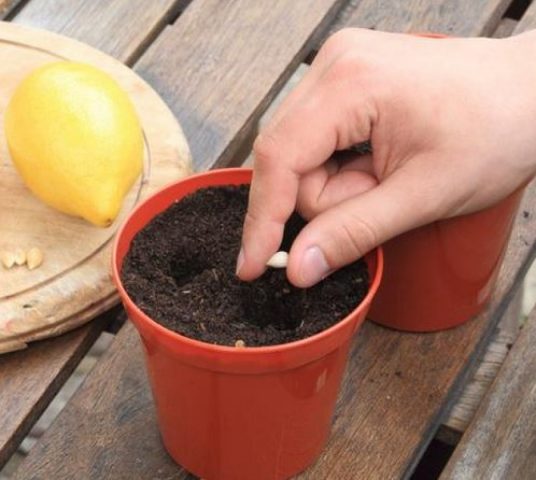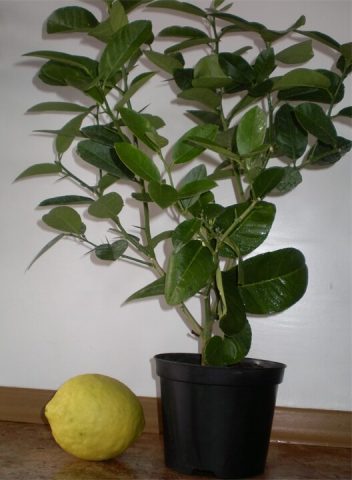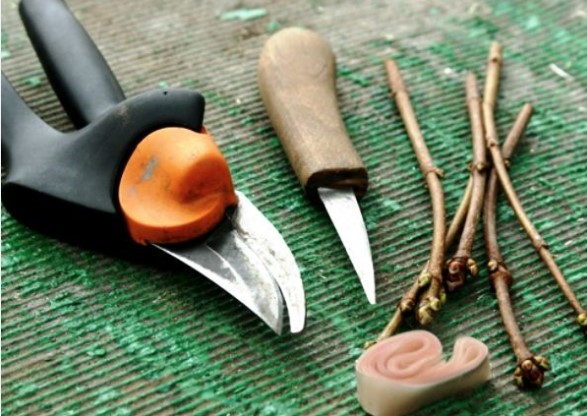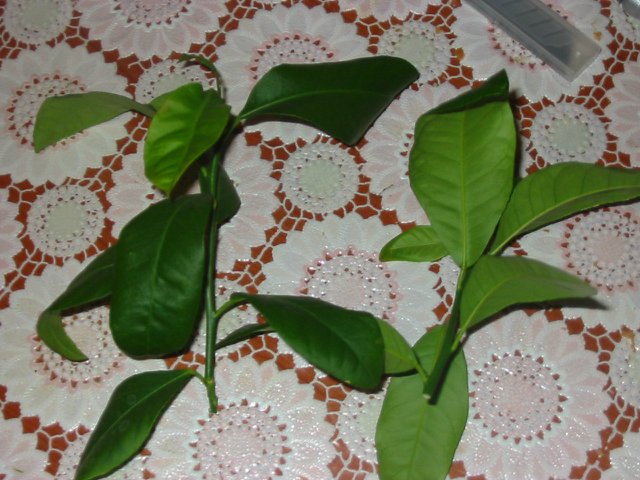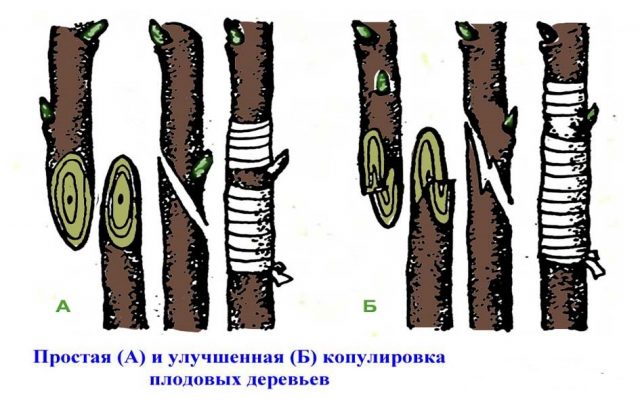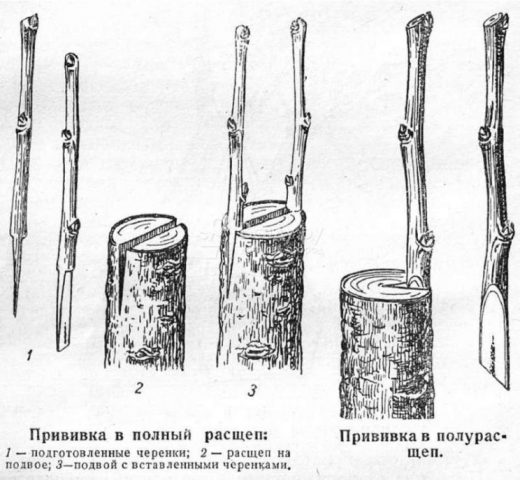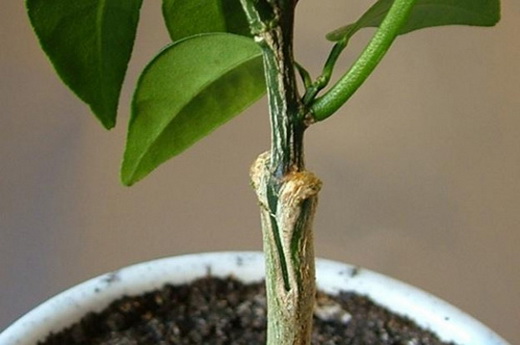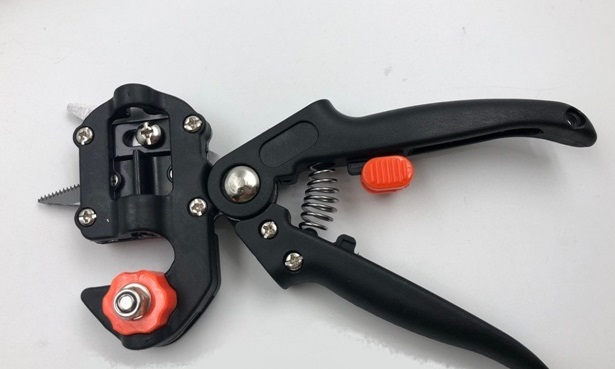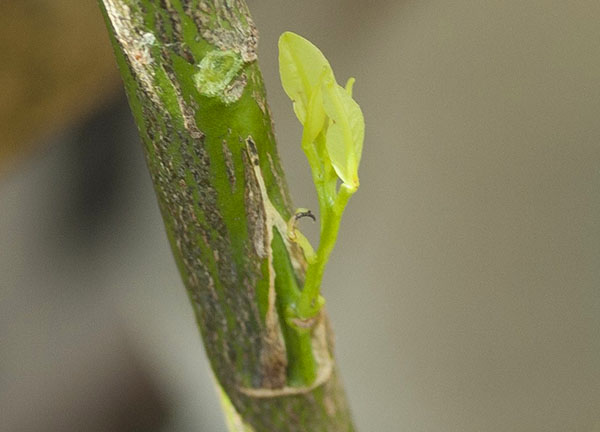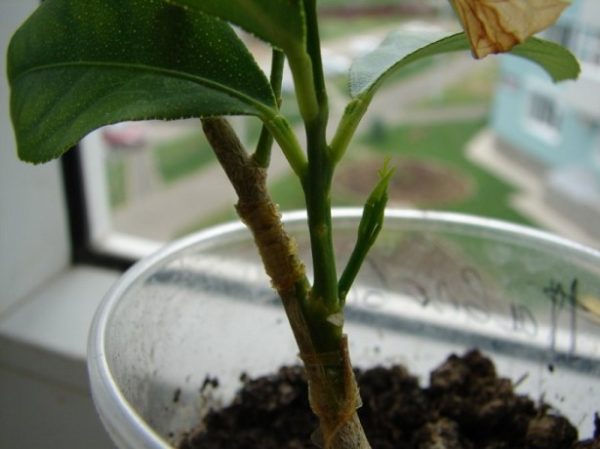Content
Planting a lemon to stimulate flowering and obtain a bountiful harvest at home can be done with even minimal skill in caring for garden trees. In this process, the quality of the tools used, the optimal timing of the procedure, the correct preparation of the donor tree and the grafted seedling play an important role.
Aims and objectives of vaccination
Grafting home or garden trees is one way to propagate and domesticate them. After a successful procedure, the lemon begins to bloom and bear fruit faster.
Properly carried out vaccination:
- stimulates flowering and growth;
- significantly brings the date of appearance of the first harvest;
- retains the characteristics of the variety;
- helps to get a strong, viable tree in a short time.
Do I need to graft seed-grown lemon
A strong, healthy, viable lemon can be grown at home from an ordinary seed. To do this, it is enough to place it in fertile soil, monitor timely watering, and occasionally apply complex fertilizers. The resulting tree is called wild by plant breeders.
It is difficult to achieve a harvest from such a lemon. With careful care, the first color ovaries will appear on it no earlier than 5-6 years, and full-fledged fruits - 7-8 years after planting. In most cases, the wild begins to bloom only in the second ten of its life. At the same time, it gives a meager harvest of small, sour fruits.
To stimulate budding and obtain large fruits, a bud or stalk of a fruiting houseplant is grafted onto a lemon grown from a seed. After splicing, the young shoot receives all the nutrients from the donor tree, is a part of it, but retains its varietal characteristics and taste.
The grafted lemon begins to actively bear fruit already in the 2nd - 3rd year of growth.
Vaccination methods
The methods of grafting lemon at home differ in the methods of combining shoots of 2 different plants:
- scion - buds or cuttings of an indoor fruit-bearing tree;
- Ptwo - a young seedling chosen for implantation of grafting material.
After examining them at the preparatory stage, the most suitable technology is determined:
- Budding - an easy and safe method for a tree, having a high survival rate, and a low material consumption. The method is optimal in the presence of a dense, properly formed crown of the donor tree. For grafting, a young, strong high-quality lemon bud is carefully placed under the bark of the rootstock. At the same time, damage to plants is minimal.
- Copulation Is a common, but more traumatic method for rootstock. The cuttings of the scion and the mother tree are cut at an acute angle, combined, and fixed. The diameter of the trunks should be approximately the same so that the bare wood is as small as possible.
- Cutting by bark or split - one of the most effective, but more complex methods.The trunk of the donor tree must be thick enough to withstand damage and stress. At the same time, the tree should not be older than 2.5 - 3 years. The advantage of the method is the large number of viable buds remaining on the scion. However, if the graft is rejected, the donor tree usually dies.
What can you plant lemon on
The key to the success of grafting a lemon tree is the correct choice of rootstock. The plant must be strong, viable, disease resistant, and have good taste.
For the stock, it is worth choosing young seedlings of dwarf varieties of orange, grapefruit or lemon, independently grown from the seed. It is important that the diameter of the stem of the sprout does not exceed 2 - 4 cm. The plant should not be older than 3 years, have a strong, developed root system.
If the mother tree is chosen correctly, young shoots grow actively. After a year, they are abundantly covered with flowers, and after another year, with proper care, they give the first harvest.
Optimal time to inoculate a lemon
According to experienced growers, the best time for gardening is early spring. In March and early April, sap flow is intensive, shoots and leaves are actively growing, seedlings are susceptible to agricultural technology.
The timing of the lemon vaccination at home depends on the chosen method of the procedure:
- Budding - successfully takes place in April – early May, when the plant is actively growing. It is permissible to inoculate a lemon in August, but at this time the tree is already "falling asleep", the survival rate is reduced, the formation of cuttings is slow.
- Copulation - carried out in winter or early spring before the first buds appear. Saplings during this period are the most viable.
- The best time for cleft grafting is March, when the lemon has many young and strong shoots.
To carry out vaccinations, it is worth choosing a rainy, cloudy day with the highest air humidity. So the plant will more easily endure manipulations, adapt faster.
An incorrectly selected period can lead to rejection of the grafting material, rotting, drying out of the bud or main trunk.
Preparation of tools and material
To successfully inoculate a lemon, you need to correctly select and prepare garden tools, materials, scion and rootstock.
The set of necessary tools includes:
- pruning shears to remove excess leaves and shoots;
- sharp knife or blade;
- special strapping material, electrical tape, narrow elastic or gauze bandage;
- garden pitch to protect the cut from infection and decay;
- disinfectant solution, wet wipes.
Tools must be carefully sharpened and decontaminated. Trunk, cuttings and arms - treated with antiseptic wet wipes.
How to inoculate a lemon with a cuttings
On a wild game with a strong, developed root system, grafting of a lemon with a cuttings would be optimal. The method involves cutting off the donor trunk and splicing it with a scion of a similar diameter. As a result, a young shoot replaces the old branch: a tree with a varietal crown grows in its place.
Where to get a cutting for grafting a lemon
The success of implantation and splicing of shoots depends on the quality of the grafted material.
The scion stalk is best taken from a 1 - 2-year-old branch of a home-bearing fruit-bearing tree.For grafting, cut off 10 - 12 cm from a smooth, elastic shoot, leaving 2 - 3 viable green buds.
The rootstock for grafting indoor lemons is grown from an ordinary seed. It is not easy to obtain a varietal scion material. You can find quality cuttings:
- at specialized points of sale;
- in a professional online store;
- through the section of private ads on the local Internet portal;
- on the forum of citrus growers.
The first option is the most reliable, ensuring that you get the right kind of lemon for grafting. The choice of the rest of the options is fraught with a certain risk, you can purchase a hybrid or sterile plant.
Lemon grafting by copulation
Copulation is a method of grafting a lemon by precisely combining slices of rootstock and scion cuttings. For successful engraftment, their diameter must be the same.
Procedure:
- A seedling no more than 5 cm long is cut from the mother plant. The crown is removed from the cuttings selected as the rootstock.
- Selected shoots are treated with antiseptic agents.
- Elongated oblique cuts of approximately the same size (3-4 cm) are made on cuttings at an acute angle.
- They are combined with each other, tightly fixed with strapping material.
Improved copulation of lemon assumes an additional vertical cut-step, for better splicing of the shoots.
The result of the procedure can be assessed in about 3 weeks. After this period, the bandage is removed, the overgrown side shoots and shoots below the site of inoculation are removed.
Lemon grafting into cleavage
Split grafting is convenient when it is necessary to grow cuttings of different diameters.
Algorithm of actions:
- The trunk of the donor tree is freed from leaves, growths, small shoots.
- Wipe with an antiseptic composition, cut off at a height of 5 - 10 cm from the soil surface.
- In the remaining part, use a sharp knife to make a vertical incision with a scalpel to a depth of 2.5 - 3 cm, carefully split it into 2 halves.
- In the lower part of the scion, cuts are made at an acute angle on both sides.
- The resulting wedge is carefully inserted into the cleft until it stops, the boundaries of the bark are aligned.
- Bare areas of wood are lubricated with garden varnish - to protect against infection and decay.
- The trunk is tightened with a bandage.
As a scion, you can use 2 cuttings at the same time. The chances of survival in this case are higher.
The key to a successful vaccination is straight, perfectly aligned sections. It is easy to make them using a special pruner purchased from a garden supply store.
The instrument has a set of nozzles suitable for any method of vaccination. This ensures the safety and ease of the procedure, quick adaptation and healing of shoots.
How to get a bud inoculated lemon to bear fruit
Grafting a lemon with a kidney is called budding or "peephole grafting." The process is the transfer of a bud and part of the bark from a lemon cutting into a depression on the main stem or branch of the donor plant. This method is one of the safest and easiest to perform.
Before the procedure, it is worth carefully preparing the inoculation material:
- On varietal lemon, a young, large, viable bud is chosen.
- Cut it off together with the leaf petiole and part of the bark (shield).
- The sheet is removed completely or ¼ of the total area is left for feeding.
- The graft is immersed in cool, preferably filtered or settled water so that the bud does not dry out.
For the stock choose a young (about 3 years old), strong plant with strong bark and active sap flow. The trunk must be wiped with a damp antiseptic cloth or treated with alcohol.
Algorithm of actions for inoculating a lemon with a kidney:
- A transverse incision 1 cm long is made on the trunk of the donor tree at a height of about 10 - 12 cm from the ground. Its depth should be such that the bark can easily be separated from the wood, but the core remains intact.
- Another incision is made perpendicular to it, 2.5 - 3.5 cm long. It turns out a T-shaped cut.
- The bark is folded back slightly so that there is access to the inner wood.
- A prepared shield with a bud of a cultured lemon is inserted into the resulting recess.
- The trunk at the site of inoculation is tightly wrapped with strapping material, elastic or gauze bandage, polyethylene or electrical tape. It is important to make sure that the "eye" remains outside, no bandage is applied to it.
- For tightness, a garden var is applied over the strapping.
To increase the chances of getting a varietal lemon, you can do a double grafting - implantation of 2 buds from opposite sides of the trunk. You need to be sure of the strength and vitality of the mother tree: the load on its root system will be increased, a double volume of nutrients will be required.
The result of the procedure can be assessed in 15 - 25 days.
If the stalk turned yellow and fell off, the lemon inoculation was successful. Soon a young shoot will appear and actively grow.
A month after germination, the harness is removed, the trunk of the donor tree is cut off, stepping back 10 - 15 cm from the implantation site, the saw cut is processed with garden pitch.
If the varietal bud has darkened, shriveled, does not fall away from touch, the vaccination has failed. The old stalk must be carefully removed, the cut must be disinfected, and the procedure must be repeated in another part of the bark.
How to grow a home-grafted lemon
After vaccination, the lemon needs careful care and a complex of restorative, healing and stimulating measures:
- Greenhouse conditions are created for the plant: they are covered with a glass jar, a plastic bottle, and polyethylene.
- The resulting greenhouse is ventilated at least 2 times a day, opening the film for 3 - 5 minutes.
- The lemon pot is placed on a sunny, warm windowsill, providing enough light for growth and development.
- On the donor shoot, all leaves and lateral processes are removed.
- In an improvised greenhouse, a high level of humidity is maintained: a richly moistened napkin or a small container with water is placed under the film, and timely watering is provided. In addition, experienced florists recommend mulching the soil with sawdust to avoid drying out.
- After 2 - 3 weeks, the condition of the scion is assessed. If the leaf cuttings have turned black, the procedure was not successful; if they dried up and fell off, the operation was a success.
- After successful implantation of varietal material, the donor trunk is cut off at a height of 10 - 15 cm from the grafting site, the cut is treated with garden pitch.
- Carefully monitor the condition of the young lemon.
Careful attitude and careful care of the grafted shoot will help to get an excellent harvest of lemons in 1 - 2 years after the procedure.
Conclusion
To graft a lemon at home, you need to carefully study the methods of carrying out such a procedure, choose a strong donor tree, and find high-quality grafting material. For beginners, it is best to use a special pruning shear that provides even, uniform cuts. For professionals, lemon grafting is a creative, exciting process that helps to achieve an excellent varietal harvest in a short time.

